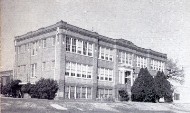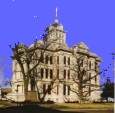Milam County Historical Commission
Milam County, Texas
All credit for these articles go to
Susie Sansom-Piper and
the Rockdale Reporter
Milam County, Texas
All credit for these articles go to
Susie Sansom-Piper and
the Rockdale Reporter






ON THE OTHER SIDE OF THE TRACKS, PART 1
Blacks lived on all sides of the tracks
by Susie Sansom-Piper
Rockdale Reporter - February 7, 2008
Once upon a time there were two railroad lines running through Rockdale, the San Antonio
& Aransas Pass (SA&AP) and Missouri Pacific.
Their lines intersected east of the Coffield buildings on Milam Street.
The SA&AP ran north - south between Waco and Yoakum. Its little two-car passenger train,
nicknamed “The Dinky” by Rockdale residents, ran twice each day.
Children who lived on Spruce and Boga streets looked forward to watching this train each
day.
Today’s Union Pacifi c Railroad through Rockdale was once the Missouri-Pacific and before
that as the International & Great Northern (I&GN).
The old I&GN Depot is now Rockdale’s Historical Museum.
Early African-American residents of Rockdale lived north, south, east and west of those
two railroad lines.
Slavery ends in Texas
Blacks came to Milam County during the late 1800s after slavery had ended. That happened
in 1863 but the news did not come to Texas until General Gordon Granger landed in
Galveston June 19, 1865 (Juneteenth).
It is said slavery was not as dense in this area as it was in Robertson County and
further into East Texas. There were few slave owners here and blacks were usually tenant
farmers or employees of large land owners so blacks experienced a certain amount of
freedom.
Early Rockdale was centered on the railroads. Streets were unpaved. Rockdale had two main
streets. Main and Cameron. By the late 20s only a few people could afford automobiles.
Transportation was limited to buggies and wagons.
The city limits near today’s Rainbow Courts on the east; the old Loewenstein House (now a
law office on Bowser) on the west; near the Coffield pipeyard at the north; and the
Roberts - FM 908 intersection at the south.
Blacks come to Rockdale
Paul Moultry (sometimes spelled Moultrie) was the first freed slave to settle in
Rockdale, even before it was incorporated as a town in 1874.
He was recruited by Valentine & Hooks General Store, the only store in the area then, to
be a blacksmith.
Second known black settler was Jack Shields, who was also a blacksmith. Following these
two pioneers to Rockdale were Paul’s brothers, Richard, Sambo and Preston who were
farmers.
Bow Den
Residents of two rural communities on the edge of Rockdale were also considered to be
“Rockdalians.”
Near the town’s western end lived Lizzie Alford Crayton and Mack Crayton, former
Tennessee slaves. This was the Bow Den community, a part of the Liberty Hill area.
Lizzie Alford Crayton lived past the age of 100. At that age she smoked a corn cob pipe
and could thread a needle without eyeglasses.
Liberty Hill, not to be confused with the present day town in Williamson County,
consisted of Bow Den, Tonkawa (across the San Gabriel River), The Hill and Little Two.
Black farmers lived in all of these areas.
The area southeast of Rockdale was known as Richards Providence. African-Americans in
that area owned large acres of land and produced outstanding citizens in the Richards and
Locklin families.
Another part of the Richards family lived southwest of early Rockdale and once owned the
land on which Super Wal-Mart and many Westwood homes now stand.
.